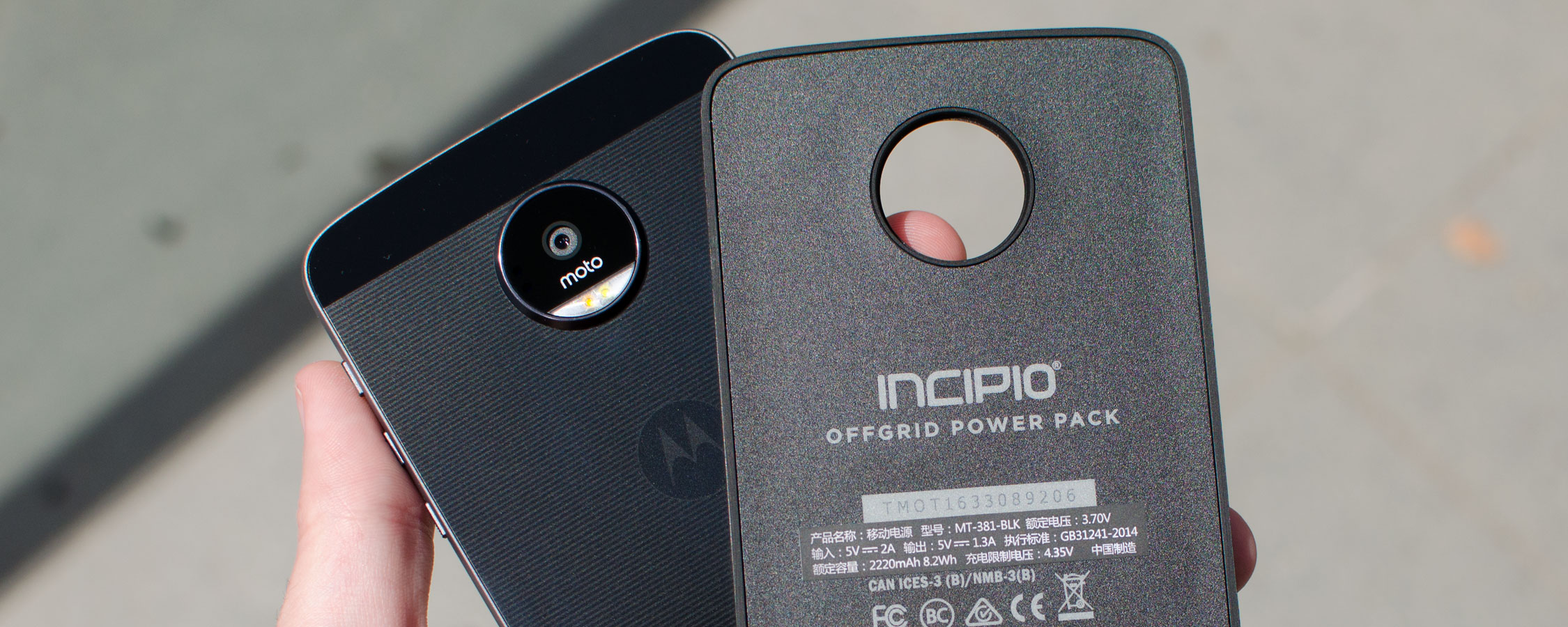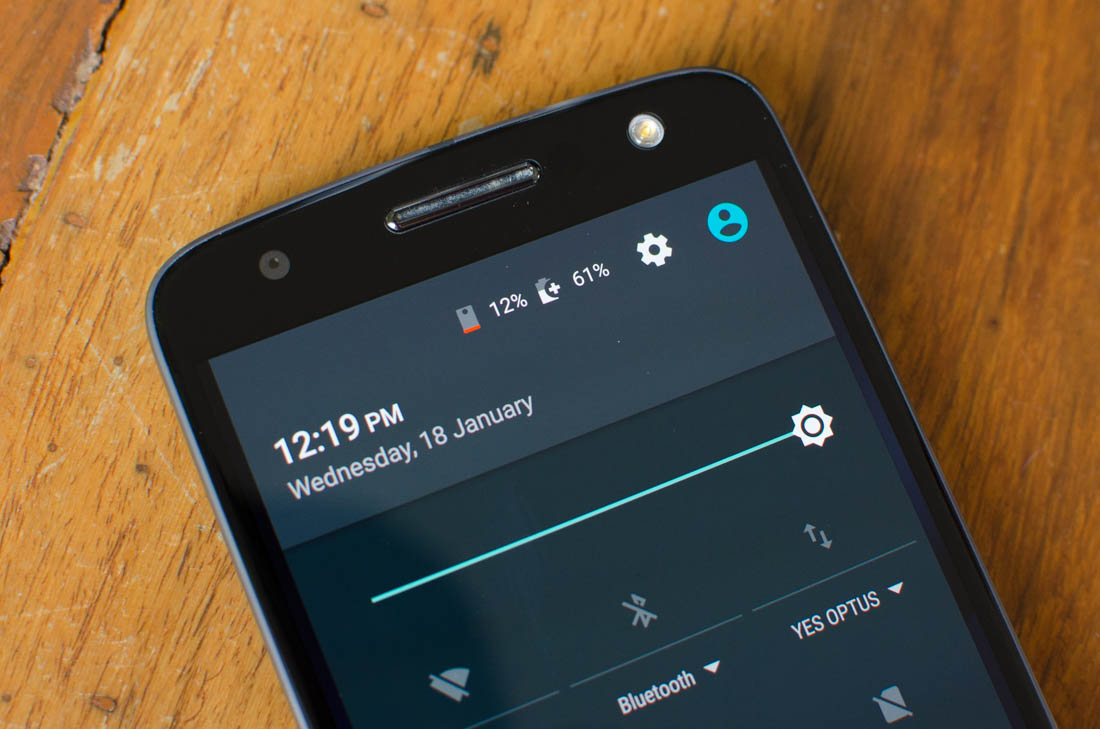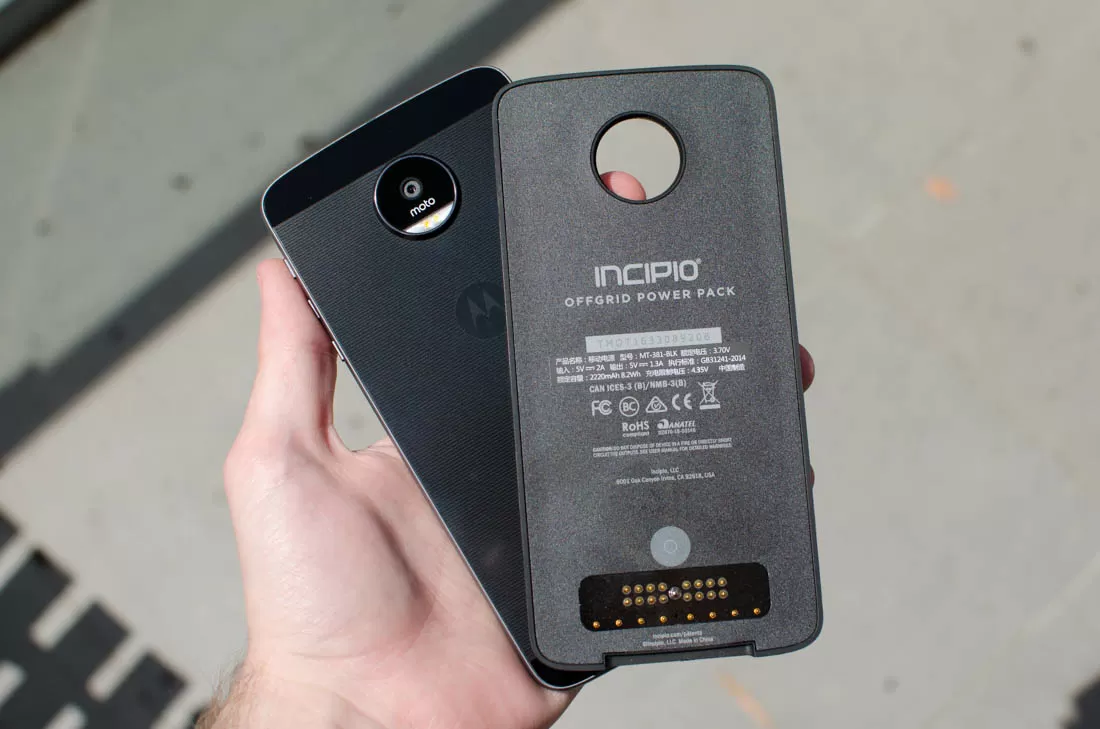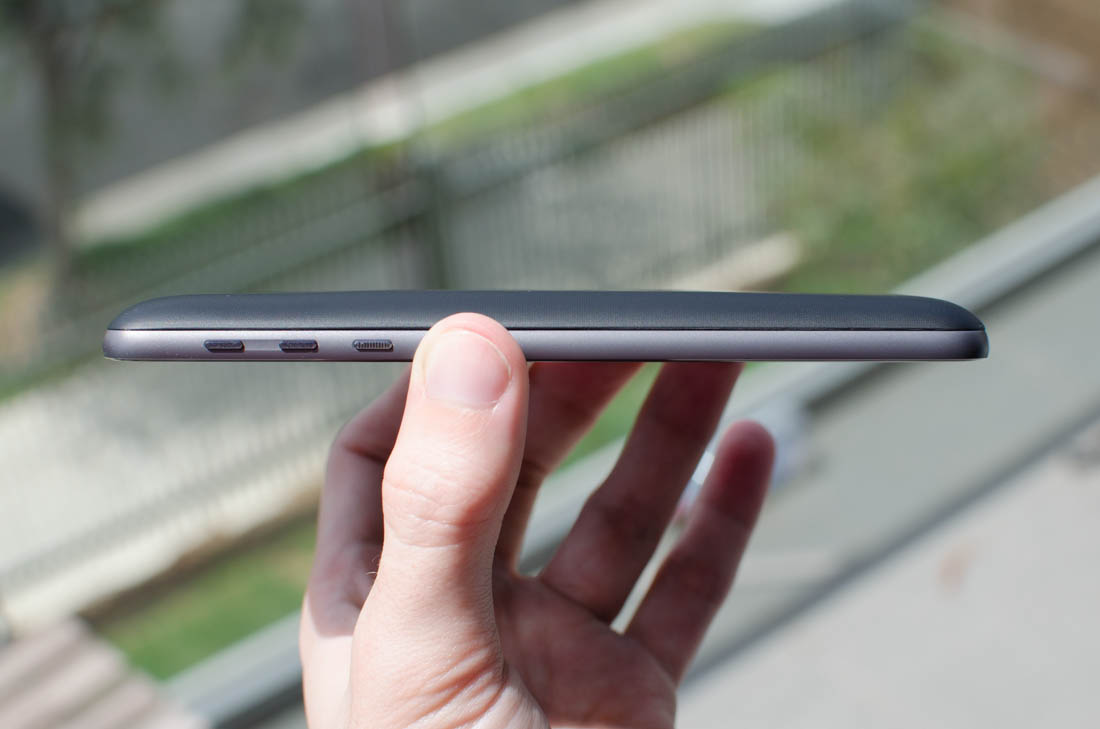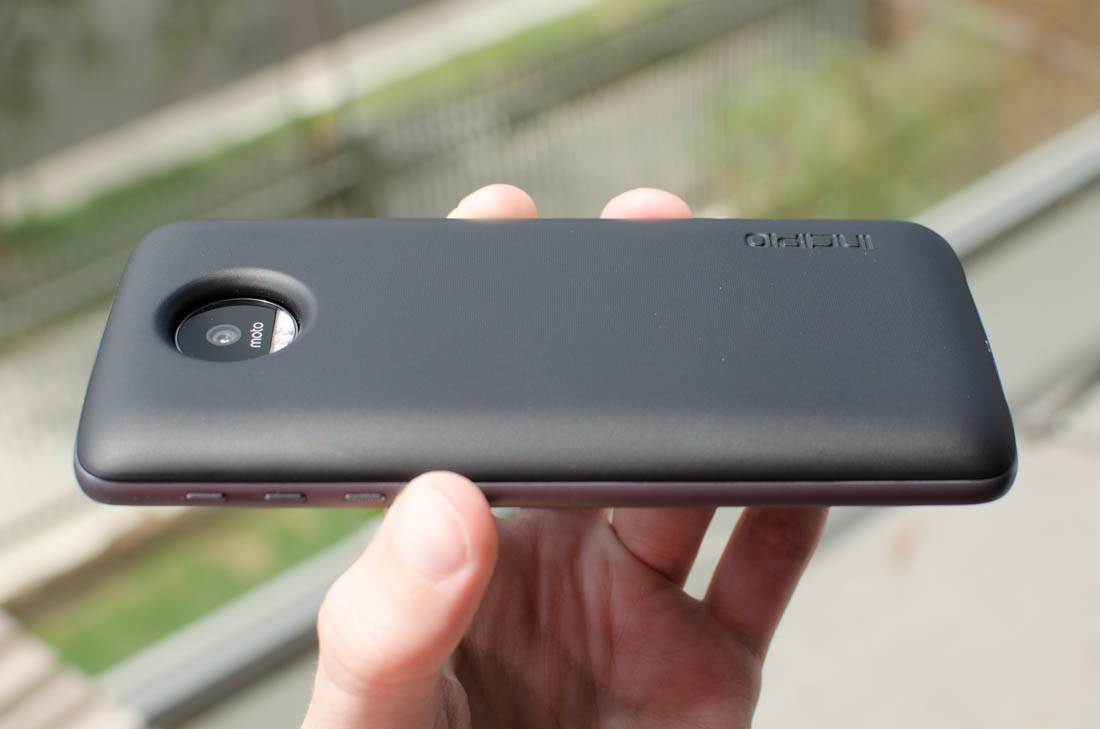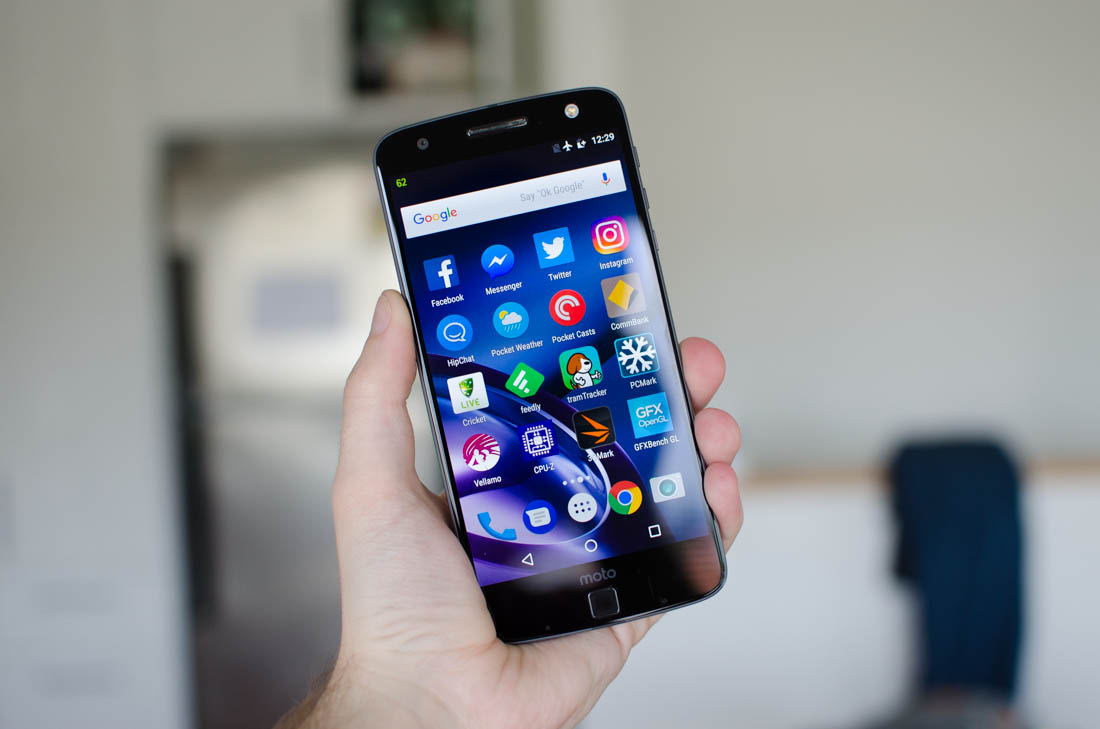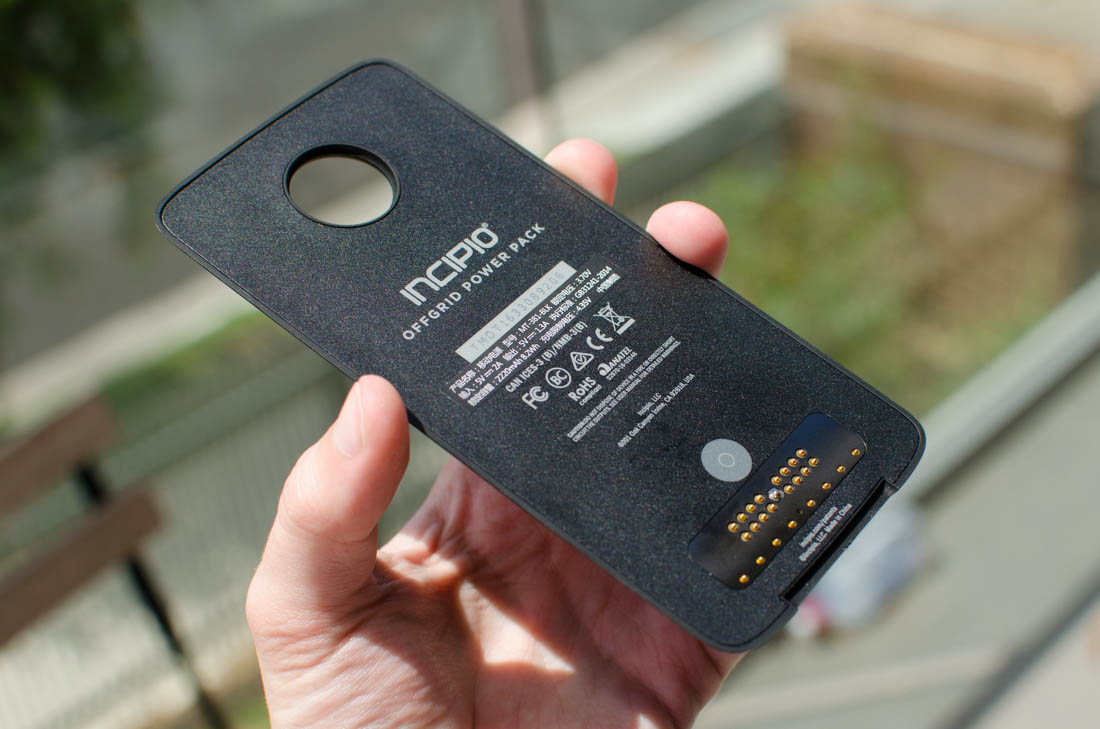There are a lot of things to like about premium smartphones: incredible cameras, top notch performance, the latest software, and superb displays are just a selection of features to expect when purchasing a high-end handset. However packing all this hardware into a slim chassis often comes at the expense of battery life - and this isn't a trade-off most consumers are willing to make.
Most flagship phones I reviewed in 2016 sported average battery life, falling somewhere in the middle of our benchmark charts. Occasionally I found an outlier like the Exynos-powered Galaxy S7 Edge, which boasted excellent battery life for its performance, but the majority of long-lasting phones are mid-range and entry-level devices.
If you want top of the line hardware in your smartphone, you'll generally have to sacrifice around three hours of battery life relative to a decent mid-range handset.
Suffering from battery anxiety on a regular basis sucks, so over the holidays I went on a crusade to find the flagship smartphone with the best battery life. Most manufacturers choose form factor over battery capacity, which doesn't leave a whole lot of options for someone okay with a bit of extra thickness and heft. In the end, I settled on the Motorola Moto Z.
"That's an odd choice," you may be thinking... consider the Moto Z packs a mere 2,600 mAh battery in an extremely slim body. In fact, this is the smallest battery in all the high-end phones I've tested in the past year.
The 5.2mm-thick body certainly doesn't have room for anything larger, but this is where Motorola's intriguing Moto Mods system comes in.
Like most phones today the Moto Z's battery is non removable, but you can magnetically attach a Mod to the rear of the device, providing a significant boost to the handset's stamina. The Moto Mods system is simple to use, and can extend battery life without a bulky third-party case or a sloppy removable back cover. It is genuinely the sleekest solution for integrating an extended battery into a high-end device that I've seen in several years.
There are two official Moto Mods that add extended batteries: the Incipio Offgrid Power Pack, and the Mophie Juice Pack. The Incipio packs a 2,220 mAh battery, adding 79 grams of weight plus 6.2mm of thickness, leading to a 215g heavy and 11.4mm thick smartphone.
The Mophie Mod packs a 3,150 mAh battery while adding 8.4mm of thickness and 112 grams of heft, resulting in a 248g heavy and 13.6mm thick device.
I opted for the Incipio Power Pack as a combined battery capacity of 4,820 mAh should be more than enough to top our battery charts, while still resulting in a reasonably-sized smartphone. While the Mophie option packs a 42% larger battery, it makes the Moto Z too cumbersome for my liking.
Why didn't I go with a battery case for a phone with already-decent battery life, like the Pixel XL or Galaxy S7 Edge? The same reason I didn't opt for the Mophie pack: I wanted to avoid a ludicrously large phone, and battery cases add a lot of heft. Larger bezels and reduced usability isn't worth it.
Why didn't I go for a standard battery bank? I love battery banks, and they are great solutions to battery woes for many, but I was specifically looking for an integrated solution that didn't require cables and could be carried around as one unit.
Note: Ideally, I would have tested the Motorola Moto Z Force Droid instead of the standard Moto Z for this article, as it packs a larger 3,500 mAh battery in the phone itself. But it's only available on Verizon in the United States, so I couldn't test it. Blame Verizon and Motorola for that.
The Moto Z with the Incipio Power Pack met my criteria. It's a high-end device packing a Snapdragon 820 SoC, a 5.5-inch 1440p AMOLED display, 4 GB of RAM with 32 GB of storage and a microSD card slot, and a 13-megapixel rear camera with OIS. With the battery pack seamlessly and easily attached to the rear, the combined 4,820 mAh battery capacity should provide a ton of stamina.
So how did the Moto Z with the Incipio Power Pack compare to a range of 2016's flagship smartphones?
The Test
For the following tests I used our standard battery benchmark methodology, which involves running the smartphone from a full charge to no charge where possible. Moto Mods work by charging the smartphone's internal battery during use, so for the most part the addition of the Mod didn't affect our tests.
The one exception is PCMark's battery benchmark, which fails as soon as the battery begins charging; in the following charts, the PCMark result is extrapolated to what would be possible with the Mod attached.
Also, there are two battery Mod modes to choose from: the default mode, which keeps the phone's internal battery charged to 100%; and an efficient mode, which keeps the battery charged at 80% instead. Motorola claims the efficient mode leads to longer battery life, so I selected the efficient mode for the following tests.
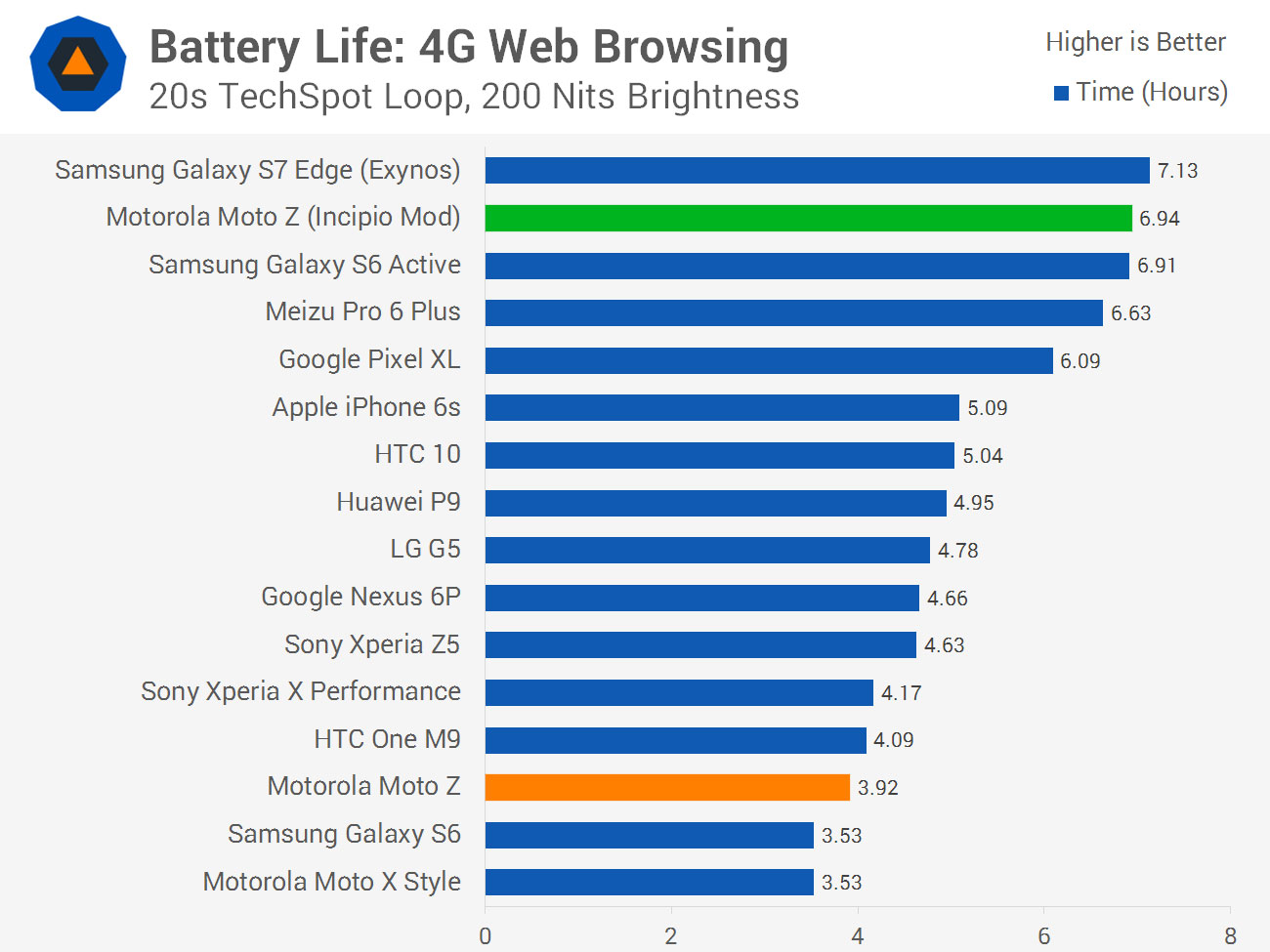
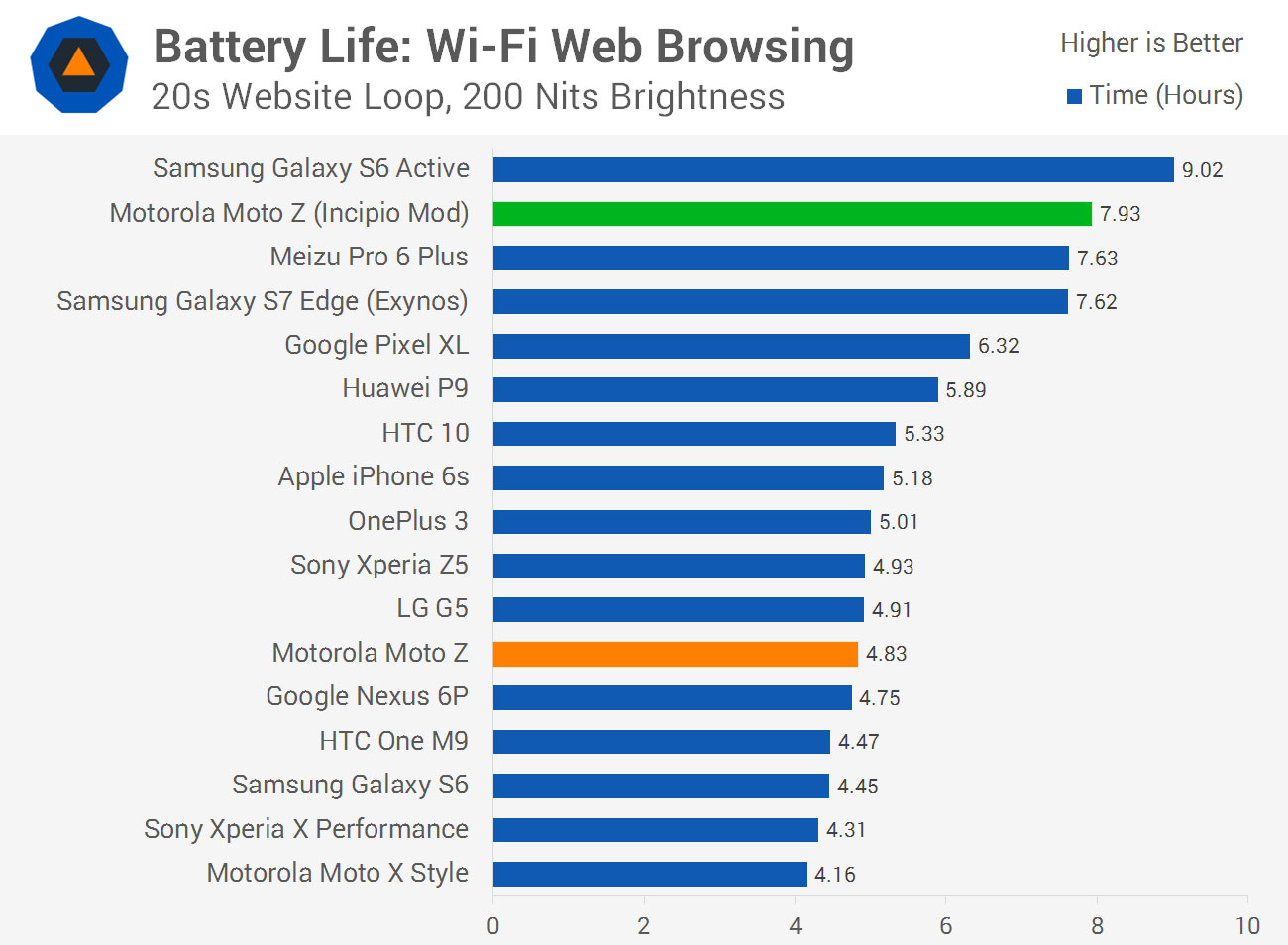
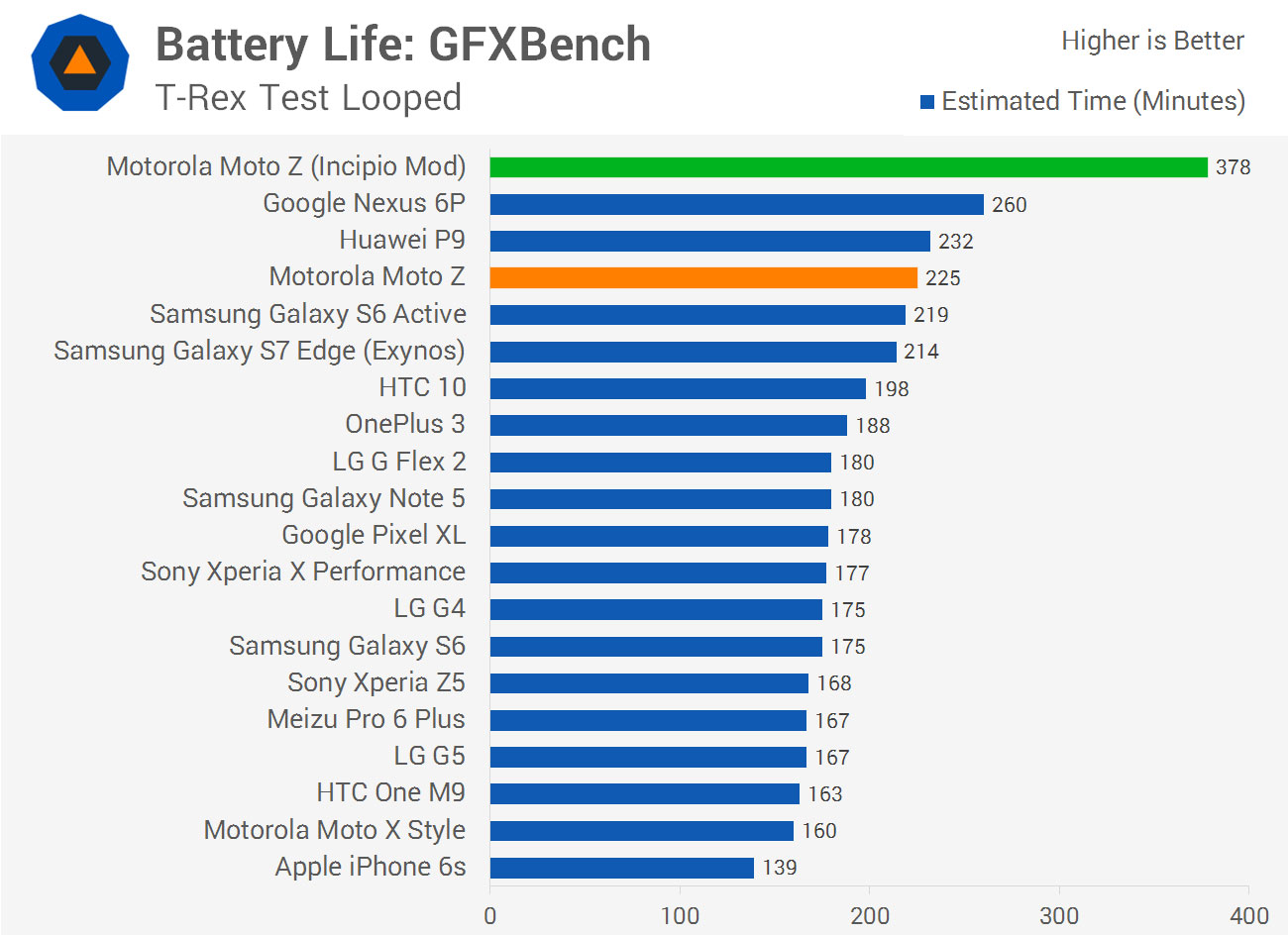
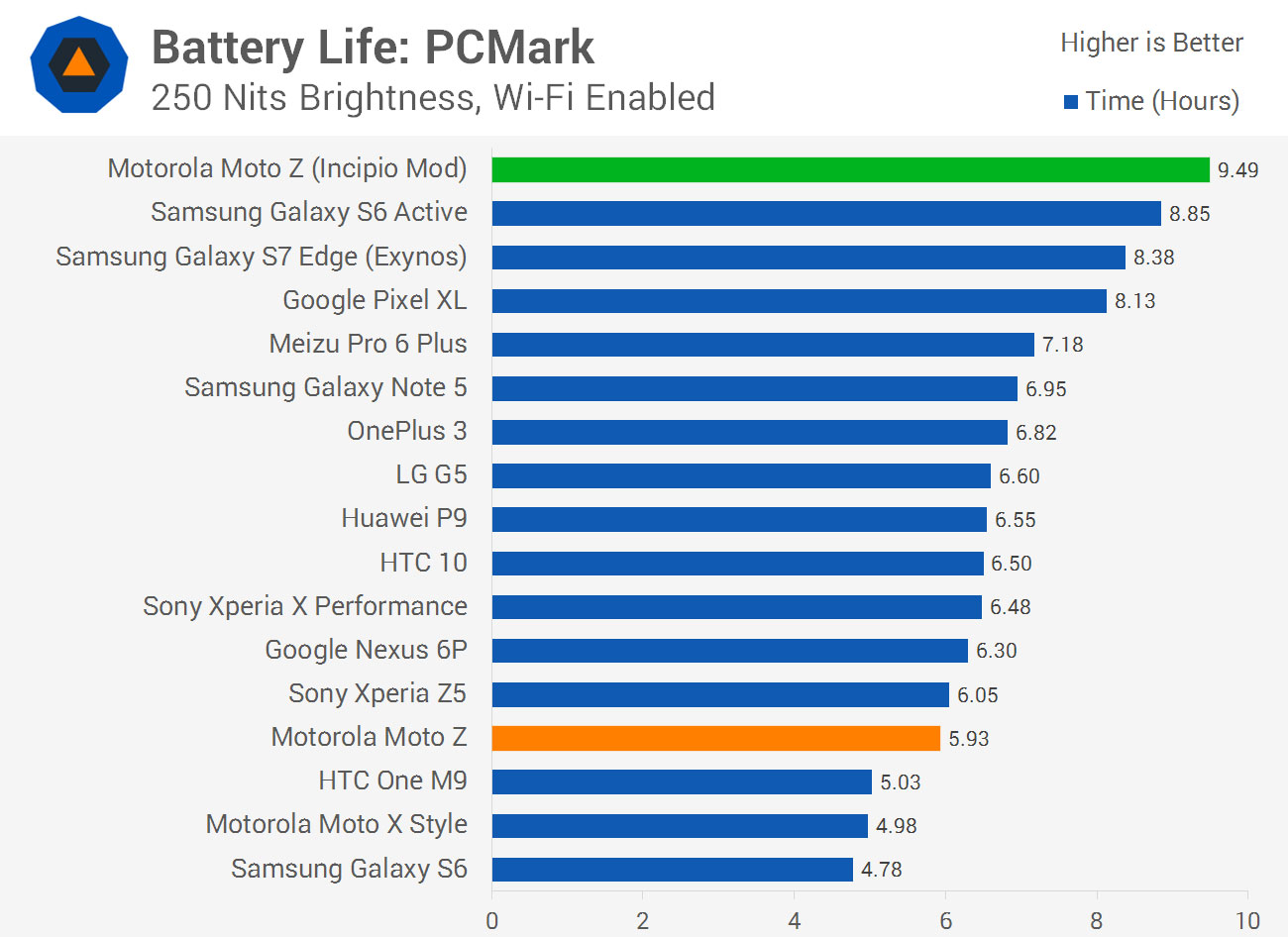
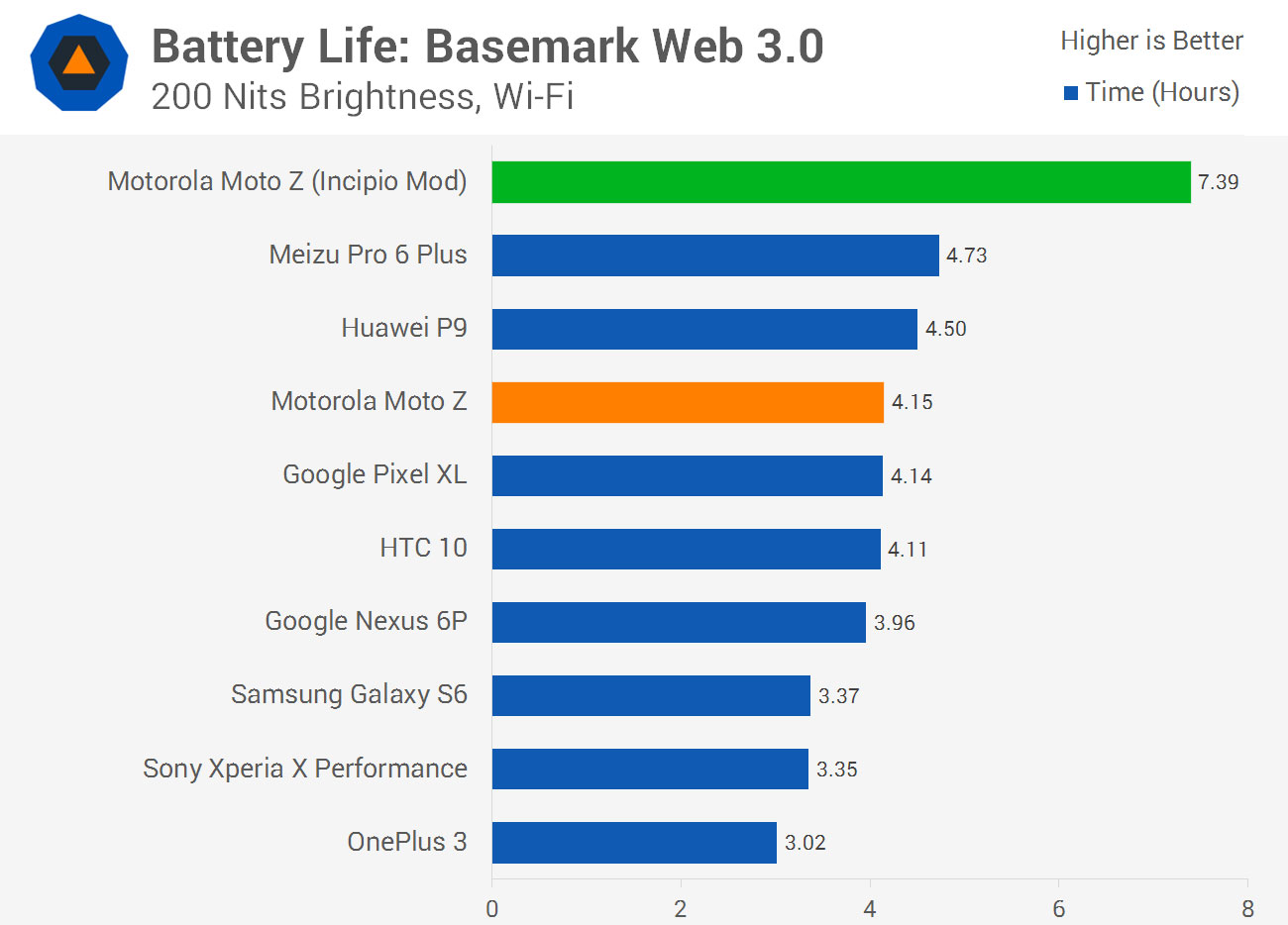
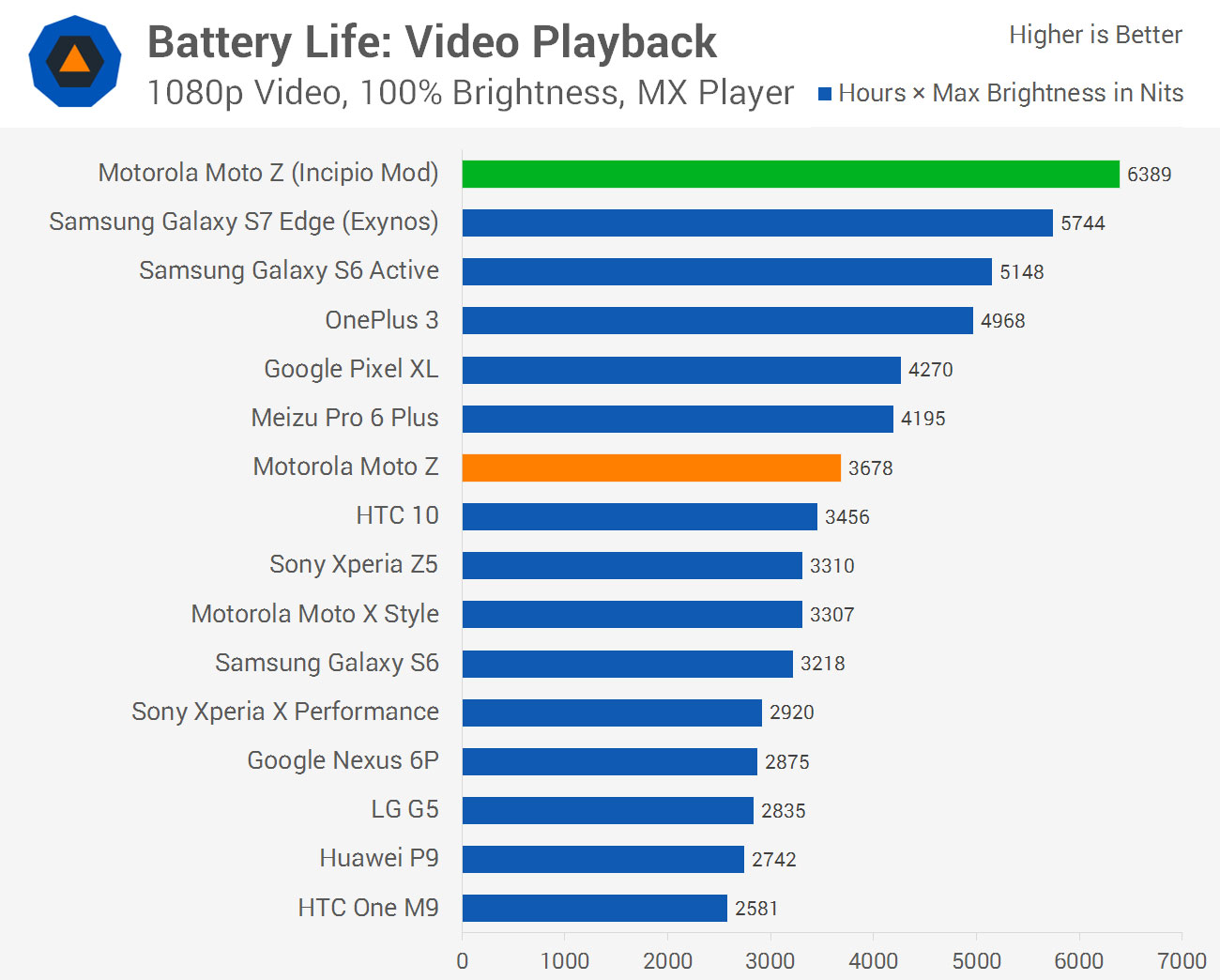
Attaching the Incipio Mod to a Moto Z with 25% remaining battery charge, the Mod managed to charge the device up to 83%, indicating the Mod can deliver around 58% of a full charge. The actual battery capacity in the Mod is 85% the size of the Moto Z's internal battery, but due to overhead the actual gains provided are less.
The good news is that real-world battery life gains are higher than 58%. This is because, as Motorola states, it's more efficient to use the battery Mod to keep the Moto Z charged at 80% than it is to charge the device from, say, 25% to 100%.
Across the battery tests I performed, the Moto Z lasted 64 to 81 percent longer with the Mod attached. It doesn't manage to double the battery life, which is a little disappointing considering it doubles the thickness of the Moto Z, but it certainly provides a significant gain.
With the Mod attached, the Moto Z comes at the top of every battery life chart but one: the 4G LTE browsing test where the Exynos-powered Galaxy S7 Edge just manages to outperform it.
The Exynos 8890's LTE modem is particularly efficient, so this Galaxy S7 Edge variant fares quite well. Nevertheless, the Moto Z crushes some of its competition at times.
Here's a quick summary of the results:
- 80% better than the LG G5, the only current flagship with a removable battery
- 55% better than the HTC 10
- 50% better than the Google Nexus 6P
- More than 40% better than the OnePlus 3
- At least 40% better than the Huawei P9
- 20% better than the Google Pixel XL
- Roughly 15% better than the Samsung Galaxy S7 Edge
Some of the results at the top end are slim, particularly against the Galaxy S7 Edge and, to a lesser extent, the Google Pixel XL. But even then, the Moto Z with the Incipio Power Pack attached can produce upwards of 20% longer battery life, which translates into 2 to 3 extra hours of usage in the real world.
Against mid-tier battery performers like the OnePlus 3 and Huawei P9, the Moto Z with Power Pack provides a significant advantage. When using the Moto Z with the Power Pack attached on a daily basis, the extra amount of juice contained in this setup is noticeable and completely removes battery anxiety, which was certainly not the case when I was using other flagships from 2016.
The obvious downside to the Moto Z with Power Pack is the size of the unit as a whole. You do get fantastic battery life, but the phone is thicker and heavier than most others, which reduces the portability of the handset. Is this a trade-off you're willing to make?
On the other hand, if you don't want a bulky phone for your quick trip out of the house, you can simply detach the Incipio Power Pack and return to the mediocre but still serviceable battery life of the extremely slim Moto Z. Using Moto Mods to extend battery life brings flexibility in a simple to use package that integrates well with the phone. It's a clever idea and one of the best modular smartphone concepts I've seen so far.
There's also the option of buying multiple battery Mods and swapping them out, like a removable battery but easier and more elegant. Or you can buy the larger but more cumbersome Mophie battery pack for even better battery life.
I hope that Motorola persists with the Moto Mods system in 2017. In this case it's brought a truly useful mod than can slickly transform a beautiful phone into a chart-topping battery beast if that's what you need.
